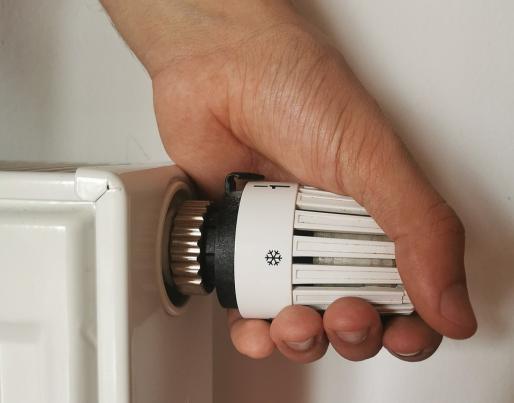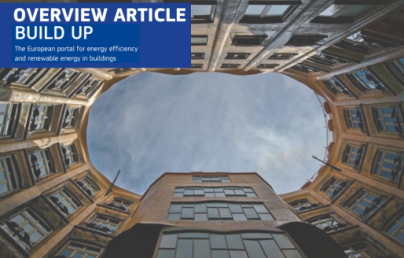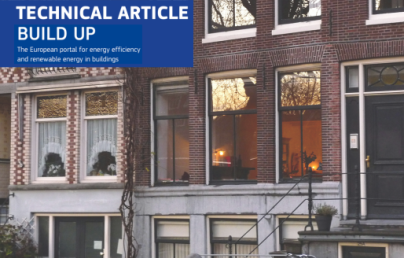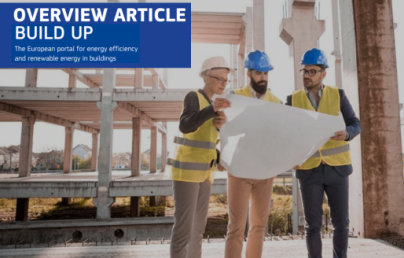Technical Article - Can you heat your house with district heating with a lower temperature supply? A performance assessment approach

Technical Article - Can you heat your house with district heating with a lower temperature supply? A performance assessment approach
Authors
Prateek Wahi, Dept. of Architectural Engineering and Technology, TU Delft
Thaleia Konstantinou, Dept. of Architectural Engineering and Technology, TU Delft
Martin Tenpierik, Dept. of Architectural Engineering and Technology, TU Delft
Henk Visscher, Dept. of Management in the Built Environment
(Note: opinions in the articles are of the authors only and do not necessarily reflect the opinion of the EU)
Introduction
Decarbonising the residential heating sector is imperative to achieving a climate-neutral built environment at the european and national levels [1]. Consequently, the Netherlands has set ambitious targets to transform 1.5 million dwellings to be gas-free, with a renovation rate of 200,000 homes annually by 2030, as a means to combat these challenges and curb the long-term impact of climate change [2].
Among various alternatives, District Heating (DH) systems with lower supply temperatures present opportunities to provide heat economically to densely populated urban centres [3]. These systems, often termed the 4th generation DH system, can provide heat lower than 75℃ compared to the traditional fossil-fired systems [4]. This reduction in the supply temperature not only increases the possibilities to integrate local sustainable sources, such as geothermal energy, residual heat from industries, supermarkets or data centres and solar thermal plants [4] but also increases the distribution efficiencies of the heat network [5,6]. Moreover, lower temperature heat (LTH) could also improve the buildings' indoor thermal comfort and environmental quality [7,8].
Despite the potential benefits of such a system in heating the dwellings gas-free, only 6.4% of the dwellings are connected to DH systems [9] and even fewer are connected to lower-temperature DH systems. Given that most of the dwelling stock is aged, with relatively poor energy performance, it is necessary to investigate their readiness for such energy transition strategies. Within this context, an assessment of the performance of the dwelling is essential to investigate the potential of the existing dwellings to be heated with LTH when supplied from the DH systems. Advanced energy simulation tools facilitate this assessment process, enabling modelling, and evaluating the building behaviour under different heating supply temperature scenarios. Additionally, insights from the performance assessment would be valuable to stakeholders in making informed decisions towards selecting appropriate renovation measures and accelerating the energy transition of the built environment. This article presents a performance assessment approach using building simulation techniques to evaluate the readiness of the existing dwelling to be connected to a DH system with LTH, and insights into minimum renovation requirements.
This study was conducted as a part of project 1.5 within the IEBB (in English: Integrated approaches for the energy transition in existing buildings) programme, which focuses on Collective heating. Project 1.5 aims to develop methods of connecting homes to low-temperature heat networks. In the context of this project, our study explored building renovation strategies and concepts for existing dwellings that could enable them to lower-temperature heat when supplied by District heating systems.
Assessment Criteria: Key Performance Indicators (KPIs)
The heating capacities for existing heating emission systems, such as radiators, decrease as the heating supply temperatures are reduced [10,11]. As a result, dwellings with higher heating demands might encounter thermal discomfort since the heating capacities cannot compensate for the high heat losses. Therefore, a dwelling under LTH must maintain thermal comfort and energy efficiency compared to its performance in existing conditions with a high-temperature supply.
The key performance indicators (KPIs) for evaluating energy efficiency correspond to area-weighted annual space heating demand [kWh/m2/year]. The study calculates occupied cold hours [hours] using the adaptive thermal limits (ATL) described by Peeters et al. [12] to evaluate thermal comfort. The study distinguishes between different activity zones, such as living areas, sleeping areas and bathrooms. It provides a calculation algorithm to evaluate comfort hours that can be used with the performance simulation models. The algorithm includes calculating the neutral (comfort band), 90% (10% PPD) and 80% (20% PPD) acceptability limit for different activity zones. The occupied hours below the 20% PPD limit were considered thermally uncomfortable due to underheating.
Performance assessment approach
The process to simulate and evaluate the readiness of the dwelling for LTH from DH systems uses a multi-step approach. The study employs a case example of a terraced house built before 1945 to assess its readiness for two supply transition goals: Medium-Temperature (MT) supply (70/50℃) and Low-Temperature (LT) supply (55/35℃).
Step 1: Determine the performance benchmark.
As a starting point, it remains unclear whether the existing dwelling could be heated with LTH provided by the DH systems, which also dictates the need for energy renovations. Therefore, building diagnostics are required to determine the benchmark performance of the dwelling using simulation models. Depending on the purpose of the assessment, these models could be steady-state or dynamic models [13,14].
This study developed a calibrated simulation model using DesignBuilder® V7.0 bundled with EnergyPlus® V9.4 to represent the case study dwelling, as illustrated in Figure 1. The input parameters used to develop the calibrated model are explained elsewhere [15]. Additionally, only the living room was analysed as occupants spend most of their time in it. The model was annually simulated in the existing condition of the dwelling with HT supply to determine the benchmark performance of the dwelling, as illustrated in Figure 2.
Figure 1. DesignBuilder simulation model for the case study dwelling. The figure illustrates surface area, heating condition, type of radiators and their size (length X height) for different thermal zones. Only the living room was selected for analysis. [16]
Step 2: Impact of reduced supply temperatures.
In this step, the energy simulation was conducted using the TRY suggested by NEN5060 [17] to evaluate the assessment criteria under MT and LT supply. Figure 2 shows that the space heating demand is reduced compared to the benchmark performance, indicating a reduction in the heating capacity. However, its effect can be seen in occupied cold hours, where compared to benchmark performance, the occupied cold hours or discomfort hours due to underheating increased by 15% in MT supply. In contrast, underheating hours increased by 97% with LT supply. Thus, indicating the need for renovation before connecting the dwelling with MT and LT supply from DH systems.
Figure 2. Annual space heating energy and occupied cold hours between 8:00-23:00 in the living room. The figure illustrates the performance of the dwelling in the existing condition with MT and LT supply compared to the original HT supply.
Step 3: Developing renovation strategies.
As found in the previous step, the dwelling would need renovations for using MT or LT supply from the DH system. Therefore, a scenario-based approach was used to develop various renovation strategies. Since different dwellings may have different starting points, three interventions were developed; basic, moderate, and deep. Figure 3 illustrates the definition of the intervention levels. Based on the intervention level, four strategies were tested and illustrated in Table 1. These strategies were tested against the two supply temperature goals described in the next step.
Figure 3. Renovation scenarios and definition of intervention levels according to Dutch Building Decree [18]. Image sources: homeserve.com; BCCA.com; insofast.com; Carl-peter Goossen
Table 1. Renovation strategies according to the intervention levels. No renovation level represents the existing condition of the case study dwelling.
Step 4: Identifying the minimum renovation strategies.
Figures 4 and 5 illustrate the performance of the dwelling under the same renovation strategies but with MT and LT supply, respectively. In either of the graphs, the red line represents the benchmark performance, and the bars represent the % change in the KPIs with respect to the benchmark performance from step 1.
Figure 4. Annual simulation results of the living room with different renovation measures under MT supply.
Figure 5. Annual simulation results of the living room with different renovation measures under LT supply.
Results
The assessment approach utilised in this study yielded six renovation scenarios based on three different intervention levels for Medium Temperature (MT) of 70/50°C and Lower Temperature (LT) of 55/35 °C supply transition goals. Each scenario consisted of specific renovation strategies.
The key findings from the application of this method on the selected case study dwelling are as follows:
- Energy renovations are necessary for intermediate terraced houses constructed before 1945 to be heated with MT and LT supply temperatures.
- Replacing existing radiators with higher heat output alone is insufficient to prepare the case study dwelling for a lower temperature supply from the DH system.
- Minimum renovations for lower-temperature readiness require moderate renovation interventions, including envelope insulation, glazing, infiltration reduction, and LT radiators. Strategies with moderate intervention levels could achieve 42-45% lower space heating demand and 37-32% fewer occupied cold hours compared to base case performance.
- Deep renovation strategies can further enhance energy efficiency and thermal comfort but may increase the risk of overheating.
Conclusion
This article addresses the need for evaluating the readiness of the existing dwelling to transition towards a district heating system with a lower temperature supply from an energy renovation perspective. The proposed approach with simulation-driven performance evaluation offers a structured way to narrow potential solutions by eliminating technically undesirable options. Furthermore, considering a life cycle perspective, the reduced options can be further analysed regarding their economic and environmental performance. Thus, it can help alleviate the decision-making struggles of the stakeholders in determining the need for renovations and selecting appropriate solutions required for the energy transition. While the study was focused on one dwelling type, its application can be scaled to other dwelling types, contributing to a decarbonised built environment.
References
[1] R. Written, F. Gerard, L. Guevara Opinska, T. Smit, K. Rademaekers, (Trinomics, Policy Support for Heating and Cooling Decarbonisation, 2021. https://op.europa.eu/en/publication-detail/-/publication/f5118ffc-eabd-11ec-a534-01aa75ed71a1/language-en (accessed August 11, 2023).
[2] Dutch Ministry of Economic Affairs and Climate, National Climate Agreement, 2019. https://www.government.nl/documents/reports/2019/06/28/climate-agreement (accessed July 17, 2023).
[3] M. Harrestrup, S. Svendsen, Changes in heat load profile of typical Danish multi-storey buildings when energy-renovated and supplied with low-temperature district heating, International Journal of Sustainable Energy. 34 (2015) 232–247. https://doi.org/10.1080/14786451.2013.848863.
[4] K. Kruit, B. Schepers, Functioneel ontwerp LT-warmtenetten gebouwde omgeving, 2019. https://www.rvo.nl/sites/default/files/2019/04/Functioneel ontwerp LT-warmtenetten.pdf (accessed August 1, 2023).
[5] H. Averfalk, S. Werner, C. Felsmann, K. Ruhling, R. Wiltshire, S. Svendsen, Transformation Roadmap from High to Low Temperature District Heating Systems, 2017.
[6] D. Schmidt, A. Kallert, M. Blesl, H. Li, S. Svendsen, N. Nord, K. Sipilä, M. Rämä, O. Gudmundson, M. Kuosa, M. Bryodo, M. Stehle, R. Pesch, D. Pietruschka, H. Huther, A. Jentsch, T. Tereshchenko, C. Bevilacqua, G. Lennermo, Annex TS1: Low Temperature District Heating for Future Energy Systems, Germany, 2017.
[7] Q. Wang, A. Ploskic, X. Song, S. Holmberg, Ventilation heat recovery jointed low-temperature heating in retrofitting—An investigation of energy conservation, environmental impacts and indoor air quality in Swedish multifamily houses, Energy Build. 121 (2016) 250–264. https://doi.org/10.1016/j.enbuild.2016.02.050.
[8] P. Ovchinnikov, A. Borodinecs, R. Millers, Utilisation potential of low temperature hydronic space heating systems in Russia, Journal of Building Engineering. 13 (2017) 1–10. https://doi.org/10.1016/j.jobe.2017.07.003.
[9] Centraal Bureau voor de Stastiek, CBS StatLine - Energieverbruik particuliere woningen; woningtype en regio’s, CBS Statline. (2022). https://opendata.cbs.nl/statline/#/CBS/nl/dataset/81528NED/table?ts=1614954433679.
[10] P. Ovchinnikov, A. Borodiņecs, K. Strelets, Utilisation potential of low temperature hydronic space heating systems: A comparative review, Build Environ. 112 (2017) 88–98. https://doi.org/10.1016/j.buildenv.2016.11.029.
[11] M. Tunzi, D.S. Østergaard, S. Svendsen, R. Boukhanouf, E. Cooper, Method to investigate and plan the application of low temperature district heating to existing hydraulic radiator systems in existing buildings, energy. 113 (2016) 413–421. https://doi.org/10.1016/j.energy.2016.07.033.
[12] L. Peeters, R. de Dear, J. Hensen, W. D'haeseleer, Thermal comfort in residential buildings: Comfort values and scales for building energy simulation, Appl Energy. 86 (2009) 772–780. https://doi.org/10.1016/j.apenergy.2008.07.011.
[13] S.N. Murray, B. Rocher, D.T.J. O'Sullivan, Static Simulation: A sufficient modelling technique for retrofit analysis, Energy Build. 47 (2012) 113–121. https://doi.org/10.1016/j.enbuild.2011.11.034.
[14] Z. Ma, P. Cooper, D. Daly, L. Ledo, Existing building retrofits: Methodology and state-of-the-art, Energy Build. 55 (2012) 889–902. https://doi.org/10.1016/j.enbuild.2012.08.018.
[15] S. Rutten, LT-READY Affordable renovation concepts that enable low-temperature heating and provide thermal comfort, Master Thesis, Technical University of Delft, 2021. https://repository.tudelft.nl/islandora/object/uuid%3A8b8dedf6-de44-4438-ae6d-2a471656e243 (accessed August 11, 2023).
[16] P. Wahi, T. Konstantinou, M. Tenpierik, H. Visscher, Requirements for renovating residential buildings in the Netherlands towards lower temperature supply from district heating., in: IOP Conf Ser Earth Environ Sci, Institute of Physics, 2022: p. 33DUMMY. https://doi.org/10.1088/1755-1315/1085/1/012031.
[17] Stichting Koninklijk Nederlands Normalisatie Instituut, Nederlandse Norm 5060 + A1, 2021.
[18] Bouwbesluit, Hoofdstuk 5. Technische bouwvoorschriften uit het oogpunt van energiezuinigheid en milieu, RVO. (2021). https://rijksoverheid.bouwbesluit.com/Inhoud/docs/wet/bb2012/hfd5.


